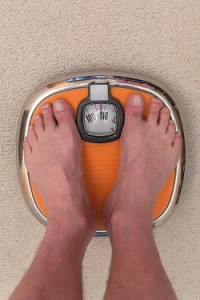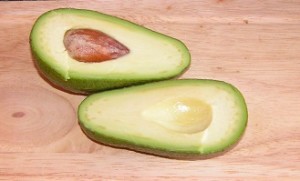People throw the phrase “low-carb” around without really knowing much about the diet. They assume that as long as you eliminate “bad carbs” like sugary drinks and foods, you’re on a low carb diet. Although that may be partly true, there’s much more to going “low-carb” than just eliminating bad carbs. As they say, the devil is in the detail, and it’s knowing the details that can really help you optimize the benefits of low carb diet and avoid the mistake too many people make, that suddenly bring their fat loss to a screeching halt.
There are several different types of “low carb” diets, with the major difference being the amount of carbs you consume.
If you’re on a very restricted carb intake, less than 50 g of carbs a day, you’re technically on a ketogenic diet. This is when you’re body literally converts fat into ketones for energy use. For most people this is too difficult to maintain, since you can come out of a ketogenic state very easily. As soon as your carb intake exceeds 40 – 50 g of carbs your body automatically shifts away from producing ketones.
A much easier level of carb consumption is between 75 – 125 g of carbs a day. This can be much easier to maintain, as long as you eliminate refined carbs and keep your consumption of unrefined carbs that are dense in carbohydrates such as whole grains, potatoes, tubers and some legumes to moderation.
It’s commonly assumed that if you’re on a low carb diet, it means you’re on a high protein diet. Although that may be true, relative to how much protein you used to eat, especially if you were on a typical Western diet high in carbohydrate foods – if you look at the percentage of total calories that come from protein in a given day, it’s not true at all.
To illustrate my point, let’s take a look at a sample of a typical low carb diet of 2000 calories a day. If you exercise 3 – 5 times a week (which is usually what I recommend) you should be consuming about 1 g of protein per pound of lean body weight. For the sake of this example, let’s say this individual weighs 170 lb and has 20 percent body fat. This equates to 136 lb of lean body weight, and that means this individual should be eating about 136 g of protein a day.
Contact me if you’d like to calculate your body fat percentage.
Let’s say that this individual consumes a typical low carb diet of 100 g of carbohydrate a day. Both protein and carbs have the same 4 kcal per gram of food. Therefore the number of calories that come from protein is 136 g x 4 cal/g = 544 and the number of calories that come from carbohydrate is 100 x 4 = 400 for a sum of 944 calories.
As mentioned earlier, the daily total calorie intake was 2000 calories for this individual. So to calculate the calories from fat, we would need to subtract the total number of calories (2000 cal) from the sum of the calories from protein and carbs: 2000 cal – 944 cal = 1056 calories (fat)
So when you break it down into individual macronutrient content, here’s what it looks like:
Protein: 544 cal (27%)
Carbs: 400 cal (20%)
Fat: 1056 cal (53%)
When you actually see what this individual eats on a “low carb” diet, it’s hardly high in protein. In fact, it should really be considered a low-carb/high-fat diet.
But too many people are still stuck on the idea that fat is bad, so they reduce their fat intake and increase their protein intake to try and make up for the calorie deficit produced by lowered carbohydrate intake. This may sound fine, but if you try it, you’ll quickly find out that your body doesn’t function well on a low-carb/low-fat, high protein diet. In fact, you simply won’t be able to sustain this kind of diet.
What happens when you try and follow a low-carb/low-fat diet is increased moodiness, increased irritability, constant low energy, extreme high sugar cravings and general malaise that worsens as your stick to this diet longer (sounds like fun to me!). This is why some many people that try low carb diets eventually end up rebounding by over consuming carbs and gaining weight.
Now it’s important to note that you’ll experience similar symptoms in the first couple of weeks, if you’re following a low-carb/high-fat diet. But these symptoms will disappear fairly quickly and you’ll start feeling the exact opposite. You’ll gain significantly more energy, have little to no sugar cravings, experience less hunger, no mood swings and you’ll feel better all around.
So in order to avoid this common “low-carb/low-fat” mistake, it’s super important that you consume enough fat in your diet.
Here are some healthy fats that I recommend:
- Coconut oil (great for cooking
- Coconut butter – you can eat by the spoonful for snacks

- Olive oil (great for salads)
- Macadamia oil (great of salads)
- Small fatty fish like sardines, herring, anchovies (wild caught)
- Large cold water fish like salmon, trout and mackerel (wild caught)
- Fatty cuts of red meat (grass fed beef)
- Fatty organ meat
- Bacon (in moderate amounts)
- Whole eggs – yolk is where the good fat is (eggs that come from pasture raised chicken is best)
- Avocados
- Nuts (in moderation, remember no peanuts…they’re technically legumes not nuts)
- Some dairy products like milk, cheese and heavy cream, if you’re not lactose intolerant (Note: goat cheese is easiest on your digestion)
Lastly, try and stick to organic products as much as possible, and stay away from GMO foods. 
Submitted by Springfield Moms sponsor Joe Thiel.

















